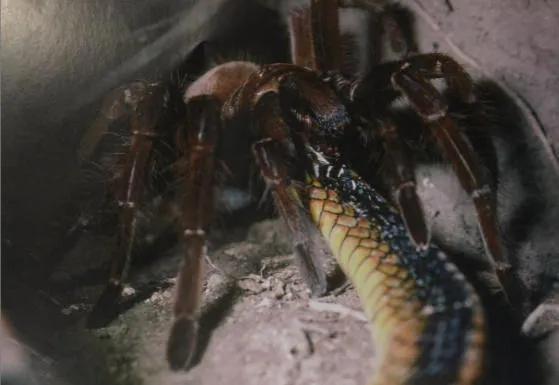Tarantula vs Snake Top 5 Facts
The natural world is full of fascinating interactions, and the potential encounter between a tarantula and a snake is no exception. These creatures, each formidable in their own right, can sometimes cross paths, leading to a dramatic clash or an unexpected truce. Understanding the dynamics between tarantulas and snakes requires exploring various factors. This article will provide you with the top five facts about tarantulas and snakes, highlighting their interactions, behaviors, and the surprising realities of their co-existence. Prepare to be amazed by the intricacies of nature’s food web, revealing the roles of these creatures within it. Let’s dive into the interesting dynamic between these two creatures, exploring the factors that determine whether a tarantula might consider a snake as a potential meal, or vice versa.
Tarantula’s Size and Snake Size
The size of both the tarantula and the snake is crucial in determining the outcome of any potential encounter. Tarantulas, while large spiders, vary greatly in size depending on the species. Some can be quite small, while others, like the Goliath birdeater, are among the largest spiders in the world, with leg spans that can exceed 10 inches. The size of the snake also plays a vital role. Small snakes are more vulnerable to predation by tarantulas, while larger snakes pose a significant threat to even the biggest spiders. The size difference directly impacts the chances of either predator prevailing in a confrontation. The rule of thumb is, larger snakes are less likely to be preyed on by tarantulas, and smaller tarantulas are less likely to be successful predators on any snake. Therefore, a careful consideration of size is important for understanding predation dynamics.
Size Ratio for Predation
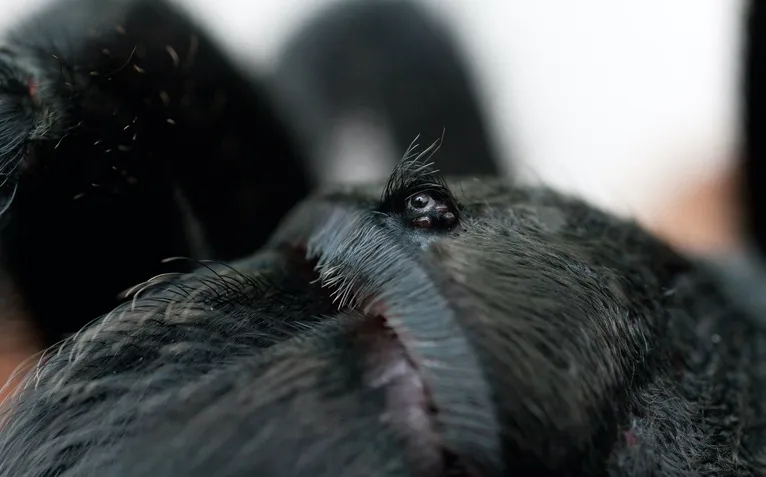
The size ratio is a key factor influencing whether a tarantula might eat a snake. If a tarantula is significantly larger than a snake, especially a juvenile or small species, the tarantula stands a higher chance of success. However, if the snake is larger, the tarantula becomes the more vulnerable party. A larger snake can easily overpower and even consume a tarantula. This dynamic illustrates the fundamental principle of predator-prey relationships, where size and strength play a pivotal role in the survival of these creatures. The size ratio therefore dictates how likely any interaction between them is to result in a meal. It determines which creature is likely to come out on top in an encounter.
Tarantula’s Venom Effect on Snakes
Tarantulas use venom to subdue their prey. While the venom of most tarantulas is not lethal to humans, its effects on snakes can vary. The venom contains neurotoxins and other compounds that can cause paralysis and other incapacitating effects, which are effective against invertebrates and smaller vertebrates. The potency of the venom and the amount injected are critical determinants of the outcome. The venom’s impact on a snake depends on the snake’s size, species, and the specific composition of the tarantula’s venom. It’s also important to consider the snake’s overall health and immune response, which might affect how the snake deals with the effects of the venom. The use of venom is important in ensuring that the tarantula can successfully hunt and consume its prey.
Venom Potency Analysis
Venom potency in tarantulas varies widely across different species. Some species have more potent venom designed to subdue larger prey quickly. Others have less potent venom, suitable for insects and small creatures. Research into tarantula venom is ongoing, with scientists constantly uncovering new information about its composition and effects. This is due to the complex combination of enzymes and toxins. The study of venom helps us understand how tarantulas hunt and what evolutionary pressures have shaped their venom profiles. The potency can play a large role in how a snake will react to the tarantula. As the venom potency increases, the chances of the snake getting away decreases. So there’s a direct relationship between potency and predation outcomes.
Snake’s Defense Mechanisms Against Tarantulas
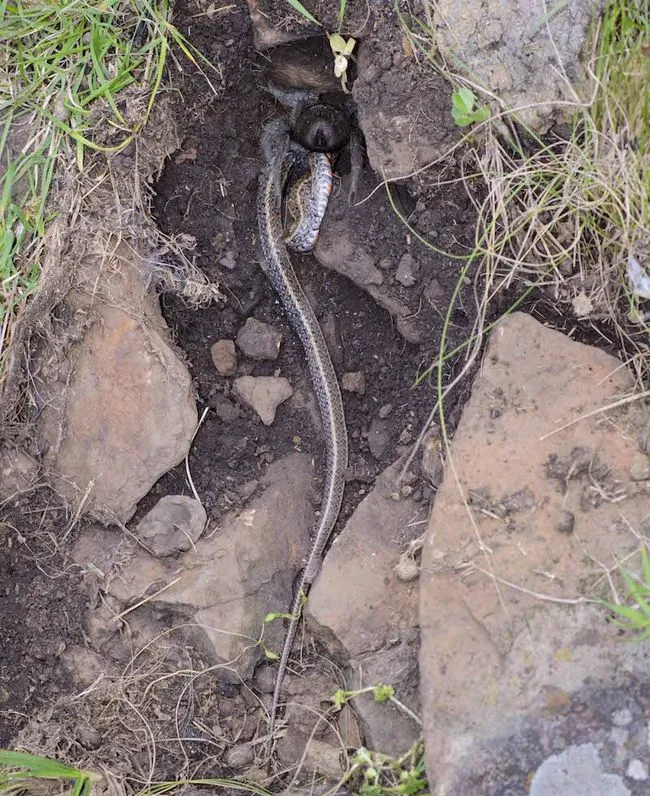
Snakes possess several defense mechanisms to protect themselves from tarantula attacks. These include the ability to flee, camouflage, and even physical defenses. Scales provide a degree of protection against bites, and some snakes can release unpleasant odors or even venom of their own to deter predators. The success of these defenses depends on the species of snake, its size, and the tarantula’s approach. Snakes may also rely on their agility and knowledge of their environment to avoid encounters. The effectiveness of a snake’s defense strategy helps them survive in environments where tarantulas are present. These defensive behaviors often determine if a snake is preyed upon by a tarantula or if it is the predator.
Defensive Behaviors Explained
Snakes display a range of defensive behaviors when threatened. Some will coil up and strike, trying to intimidate or injure the threat. Others will try to flee to safety, using speed and agility to evade their attacker. Many snakes also employ camouflage, blending into their surroundings to avoid detection. The behaviors used by the snake depends on the specific snake species and the surrounding environment. Defensive behaviors are crucial for the snake’s survival. These behaviors give the snake a chance to escape the potential predator and find shelter. These behaviors are often a life or death measure for the snake, and are essential for its continued existence in a habitat.
Tarantula’s Hunting Techniques
Tarantulas are primarily ambush predators. They often sit and wait for prey to come close before they strike. They have specialized hairs on their legs and body that help them sense vibrations and movements. These hairs give the tarantula warning about the prey. Their sharp fangs deliver venom to immobilize their victim. The hunting strategies are tailored to the size and type of the prey. They are patient hunters, waiting for the right moment to attack. Tarantulas might also use webbing to trap prey, ensuring the prey is unable to escape. The hunting tactics employed by tarantulas are crucial for their survival and depend on the specific environment they are in.
Ambush vs Pursuit Strategies

The hunting strategies of tarantulas are usually ambush-based. They often lie in wait, hidden in burrows or under cover, until a suitable prey item comes within striking distance. Once a target is located, the tarantula will launch a quick, precise attack. The pursuit of prey is less common, because tarantulas are generally not built for speed or long chases. Ambush tactics are well-suited to the tarantula’s physiology and habitat. This method also reduces the risk of injury during the hunt. Their ability to ambush their prey has made them successful predators in their environments.
Geographic Overlap and Encounters
The geographic distribution of tarantulas and snakes determines the likelihood of their encounters. Where their habitats overlap, the chances of interaction increase. In areas like the southwestern United States and parts of South America, where both tarantulas and certain snake species are prevalent, confrontations are more frequent. These encounters are influenced by environmental factors, like the availability of food and shelter. The ecology of the shared habitats impacts the survival of the tarantulas and snakes. Understanding the distribution of both species helps predict when and where interactions might occur. As the climate changes, this overlap may shift and increase the amount of interactions between the two.
Habitat Comparison
Comparing habitats reveals where interactions are more likely. Tarantulas and snakes can occupy similar habitats, such as grasslands, deserts, and forests. Tarantulas often live in burrows or under rocks, waiting for prey, while snakes may occupy similar spaces, using the same cover for shelter and hunting. The availability of prey resources, such as insects and other small animals, also influences the habitat overlap. When both species share resources in these overlapping areas, encounters become more frequent. Analyzing these habitats is essential for predicting and understanding how tarantulas and snakes interact in the wild.
What Snakes Do Tarantulas Eat?
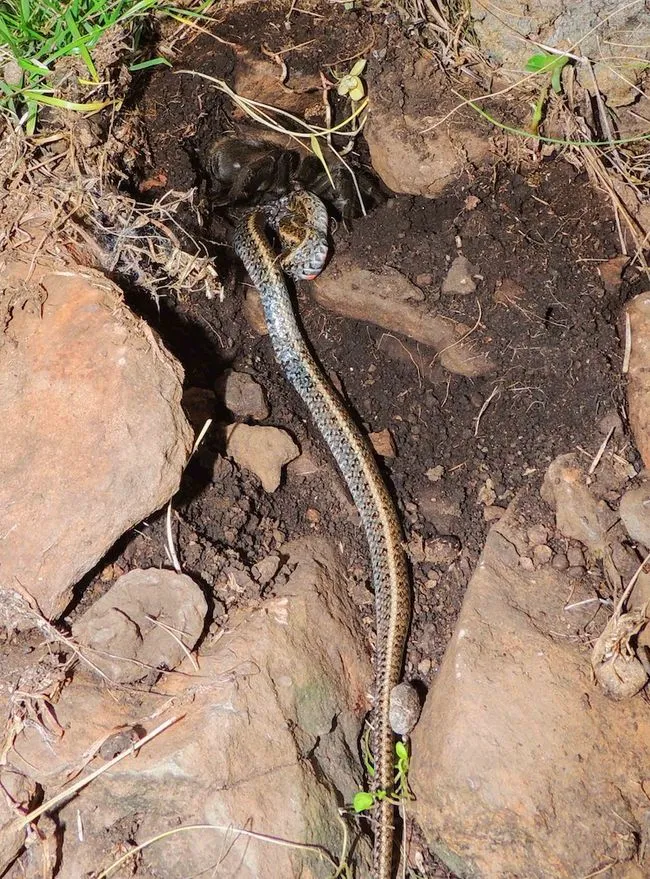
Tarantulas, being opportunistic predators, will sometimes consume snakes, specifically small snakes. However, the chances of this happening is relatively low. The size difference is a key factor, with smaller snakes being more vulnerable. Also, the species of snake and its defense mechanisms play a huge role in the outcome. Generally, it’s not a common event, but it can happen. The types of snakes are typically smaller and less aggressive than larger species. In certain circumstances, a tarantula might succeed in capturing and consuming a snake. However, a larger snake is a very effective predator, and a tarantula would not likely survive the encounter. As a general rule, tarantulas prey upon small snakes.
Dietary Preferences in Wild
In the wild, tarantulas have a varied diet, consisting mainly of insects, but they will also consume other invertebrates and sometimes small vertebrates. Snakes are not a regular part of their diet, mostly due to the challenges they present. Most tarantulas prefer prey items that are easier to subdue and consume. The availability of different prey species and the tarantula’s hunting environment also influence their food preferences. It’s not that they avoid eating snakes, but that the risk involved is often not worth the meal. So although snakes might occasionally be part of their diet, they are not a dietary staple. The focus remains on readily available, smaller prey.
Small Snake Species
Tarantulas are most likely to prey on small snake species. These smaller snakes are typically less defended and pose less of a threat to the tarantula. Young snakes or species that stay relatively small are often included in the tarantula’s potential prey list. The availability of these smaller snakes in their habitat increases the chances of predation. The tarantula’s hunting techniques are better suited for smaller prey. Smaller snakes provide a meal that is easier to capture and consume. The dietary preferences of tarantulas usually include those snakes.
Tarantula Feeding Habits and Frequency
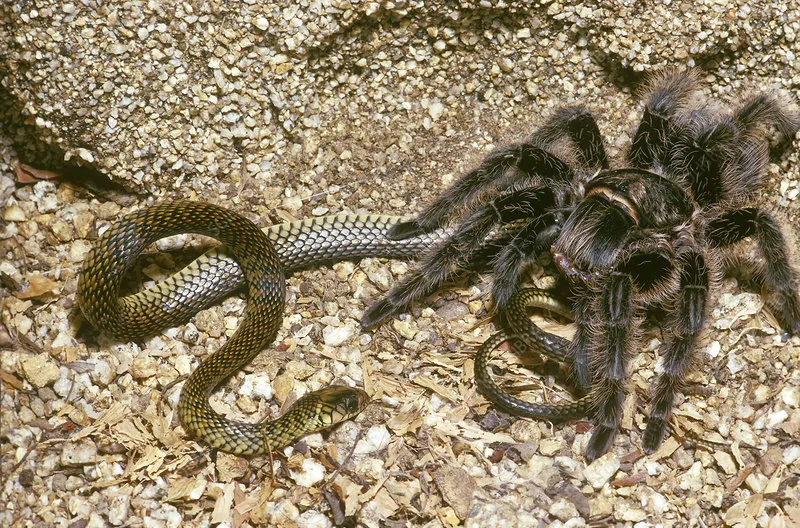
Tarantulas are known for having irregular feeding habits. Their metabolism is slow, and they can go for extended periods without food, even months. They are more active feeders when they are growing, or during mating seasons. The amount of food they eat depends on factors like size, age, and environmental conditions. Captive tarantulas are usually fed regularly, but in the wild, the availability of food may dictate how often they eat. The frequency of feeding is a critical aspect of tarantula behavior. This has an impact on survival.
Captive vs Wild Feeding
The feeding habits of tarantulas differ greatly between captive and wild environments. In captivity, tarantulas are fed regularly. The diet often consists of insects like crickets or mealworms. The food is readily available, and the spiders do not have to expend energy hunting for prey. In the wild, however, tarantulas must hunt for their food. Their feeding habits change based on prey availability and seasonal changes. Captive tarantulas have a more consistent food supply, while wild tarantulas have to deal with resource limitations. It is also important to note that a pet tarantula is fed based on the size of the tarantula and the meal itself.
Conclusion
The interaction between tarantulas and snakes is a fascinating example of the complexities of the natural world. Although tarantulas are capable of eating snakes under specific conditions, such as when the snake is small, this is not a common occurrence. Factors like size differences, venom potency, and defensive behaviors all influence the dynamics of their encounters. Through studying these relationships, we can better appreciate the intricate web of life. Understanding the behaviors and interactions of tarantulas and snakes also provides insights into the larger patterns of predator-prey relationships. The co-existence of tarantulas and snakes exemplifies the ongoing struggles for survival in the wild. This relationship is a testament to nature’s balance.
